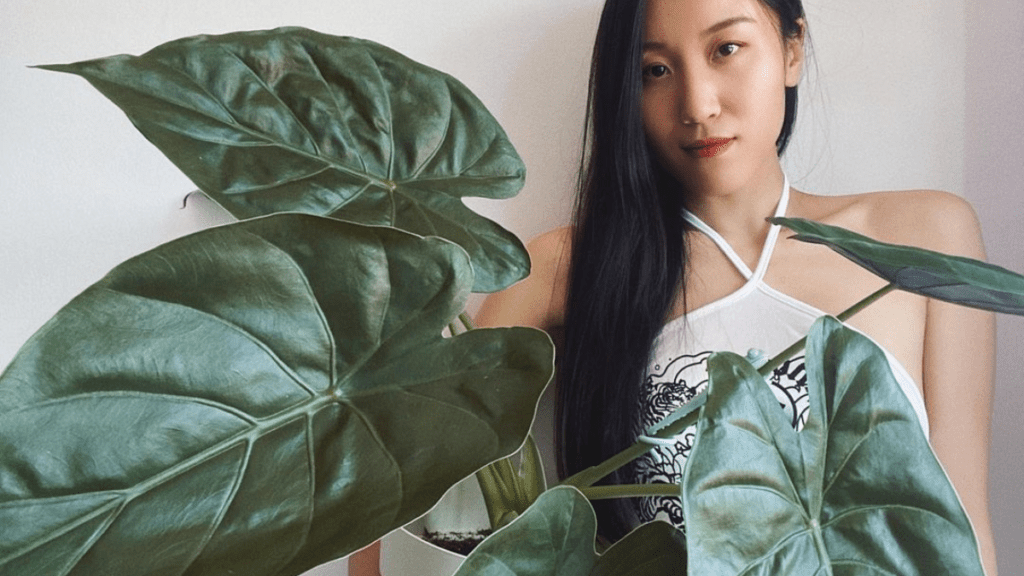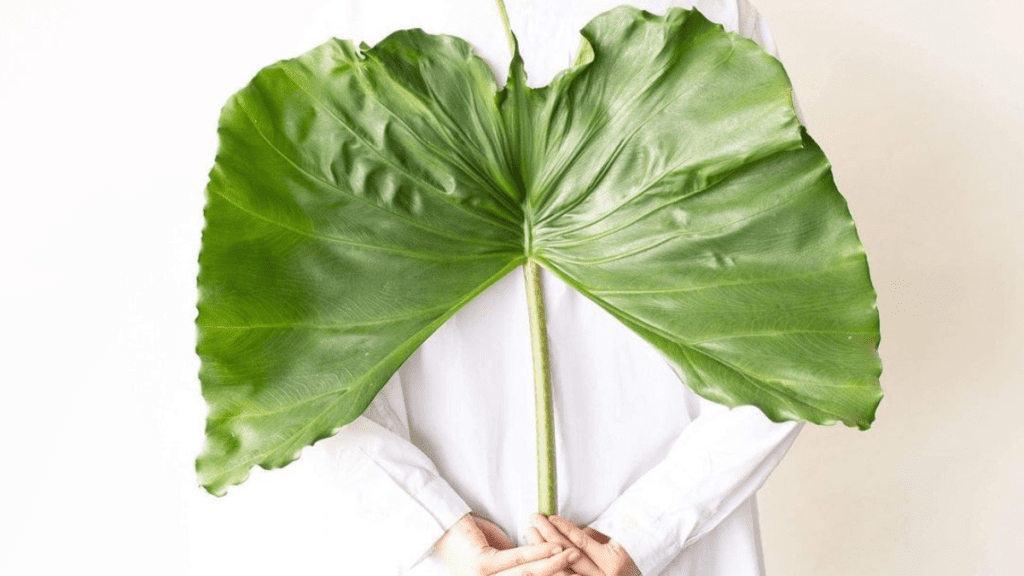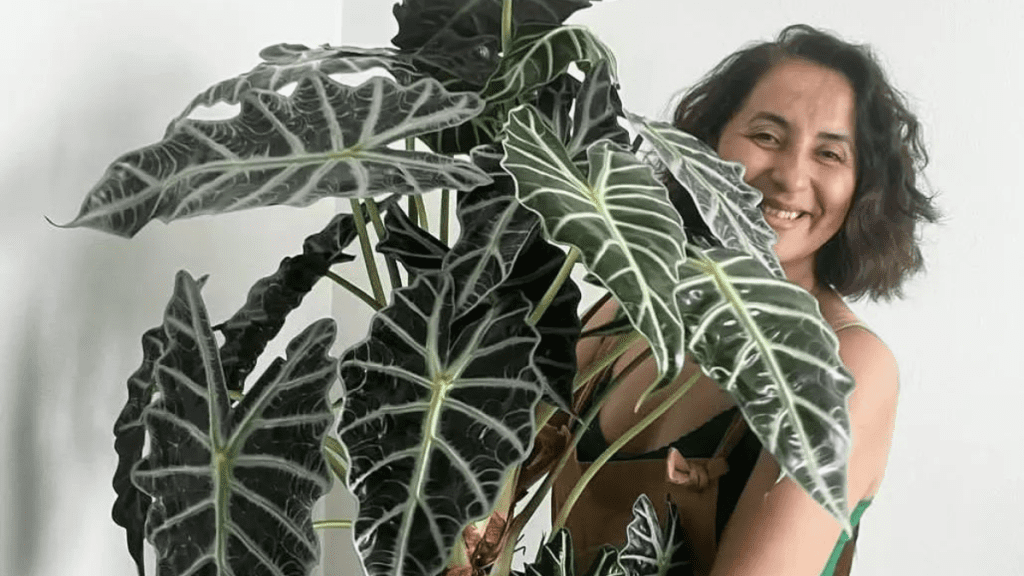
Wanting to best look after your Alocasia Lauterbachiana, better known as the ‘Purple Sword‘? As proud plant parents, we’re always on the lookout for unique additions to our green family, and this plant certainly doesn’t disappoint.
With its striking foliage and elegant demeanor, Alocasia Lauterbachiana stands out as a true gem in any indoor jungle.
Here are some intriguing facts about this majestic plant:
- Alocasia Lauterbachiana is renowned for its impressive size and bold presence, making it a statement piece in any room.
- This plant is also known as the mythic alocasia lauterbachiana, named because of the ancient vibe it gives off.
- Despite its regal appearance, Alocasia Lauterbachiana is surprisingly low-maintenance, making it an ideal choice for both seasoned plant enthusiasts and beginners alike.
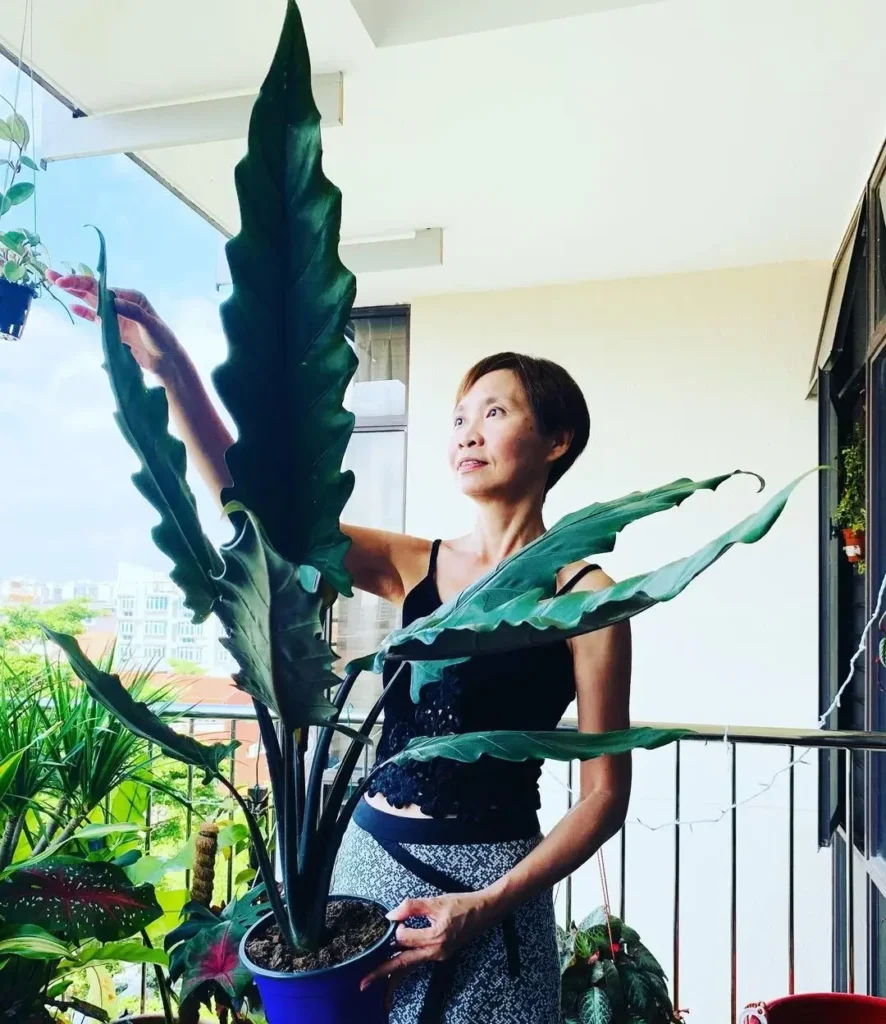

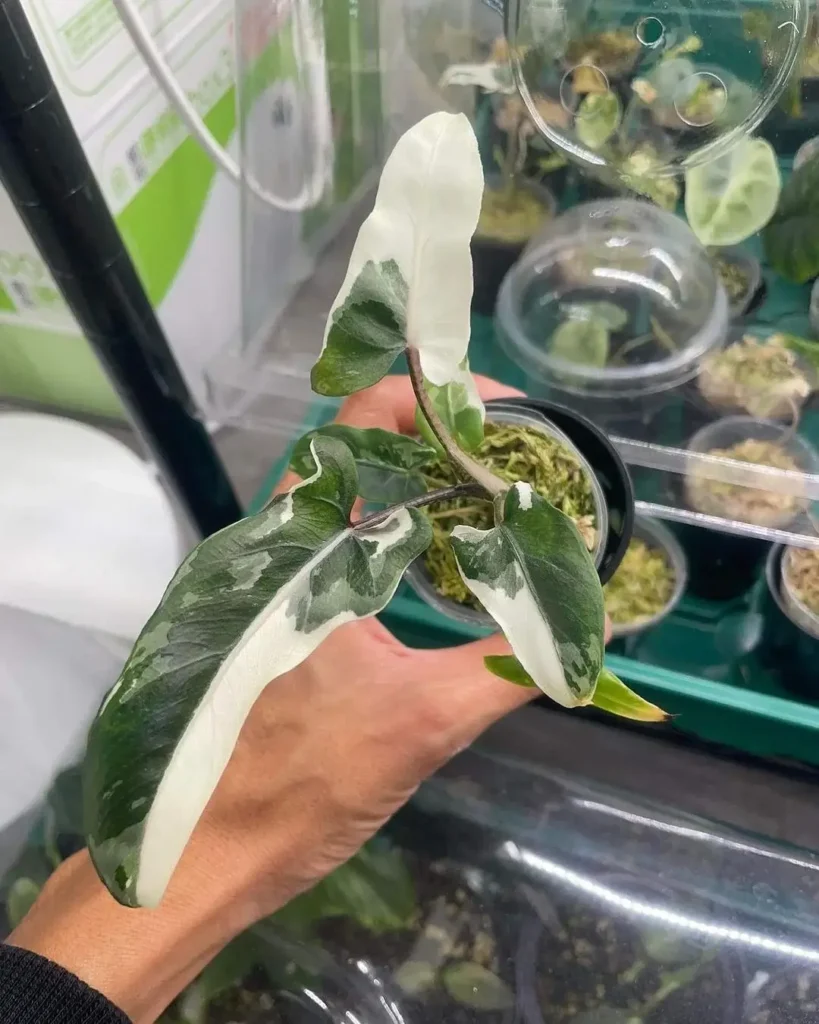
A Closer Look at Alocasia Lauterbachiana
Intricate Leaf Structure
Upon closer inspection, you’ll notice the intricate details of the leaves. Each leaf is adorned with delicate veins and subtle patterns, creating a visual masterpiece that draws the eye in.
Tropical Origins
Originating from the lush rainforests of Southeast Asia, Alocasia Lauterbachiana brings a touch of the tropics into your home. It thrives in warm, humid environments, making it an ideal choice for indoor cultivation.
Fun Fact: Alocasia Lauterbachiana’s Name Origin
Did you know that the name “Lauterbachiana” honors the German botanist, Karl Moritz Lauterbach? His contributions to the study of tropical plants have left a lasting legacy, and this plant serves as a fitting tribute to his work.
Alocasia Lauterbachiana Care Guide
Let’s delve into the essential care tips to ensure your Alocasia Lauterbachiana thrives in its new environment:
Light Requirements
Alocasia Lauterbachiana thrives in bright, indirect light. Place your plant near a window where it can receive plenty of natural sunlight, but avoid direct sunlight, which can cause sunburn and leaf damage. If your plant is exposed to too much sunlight, you may notice brown spots or yellowing leaves. Consider using sheer curtains or blinds to filter the light if necessary.
Watering Needs
Proper watering is essential for the health of your Alocasia Lauterbachiana. Water your plant when the top inch of soil feels dry to the touch, but be careful not to overwater. Allow excess water to drain away, as soggy soil can lead to root rot. Signs of overwatering include wilting leaves and yellowing foliage, while underwatering may cause the leaves to become droopy and parched.
Care Tip: To ensure thorough watering without waterlogging the soil, try the “bottom-up” watering method. Place your potted Alocasia Lauterbachiana in a tray filled with water and allow the soil to absorb moisture from the bottom. This prevents water from accumulating on the surface and ensures that the roots receive adequate hydration.
Soil Requirements
A well-draining soil mix is crucial for Alocasia Lauterbachiana. Use a rich, organic potting mix that retains moisture without becoming waterlogged. A mixture of peat moss, perlite, and potting soil works well for this plant. Ensure that the pot has drainage holes to prevent water from pooling at the bottom, which can lead to root rot.
Temperature and Humidity
Alocasia Lauterbachiana thrives in warm, humid environments. Maintain a consistent temperature between 65°F to 80°F (18°C to 27°C) and humidity levels of 50% to 60%. You can increase humidity by placing a humidifier near your plant or placing it on a tray filled with pebbles and water. Mist the leaves occasionally to provide additional moisture.
Fertilization
During the growing season, fertilize your Alocasia Lauterbachiana every 4 to 6 weeks with a balanced liquid fertilizer diluted to half strength. Avoid fertilizing during the winter months when the plant is dormant. Too much fertilizer can cause burnt tips or yellowing leaves, so it’s essential to follow the recommended dosage.
Pruning and Maintenance
Regular pruning helps maintain the shape and health of your Alocasia Lauterbachiana. Remove any dead or yellowing leaves as soon as you notice them to prevent the spread of disease. You can also trim back any leggy stems to encourage bushier growth. Use clean, sharp scissors or pruning shears to avoid damaging the plant.
Propagation Techniques
Propagating Alocasia Lauterbachiana is relatively straightforward and can be done through division or offsets. To propagate by division, carefully separate the plant into smaller sections, ensuring that each section has roots attached. Plant the divisions in separate pots with fresh potting mix, and keep them warm and humid until new growth appears. Alternatively, you can propagate from offsets, which are small plantlets that develop around the base of the parent plant. Simply remove the offsets and plant them in their pots as you would with divisions.
Common Pests and Diseases
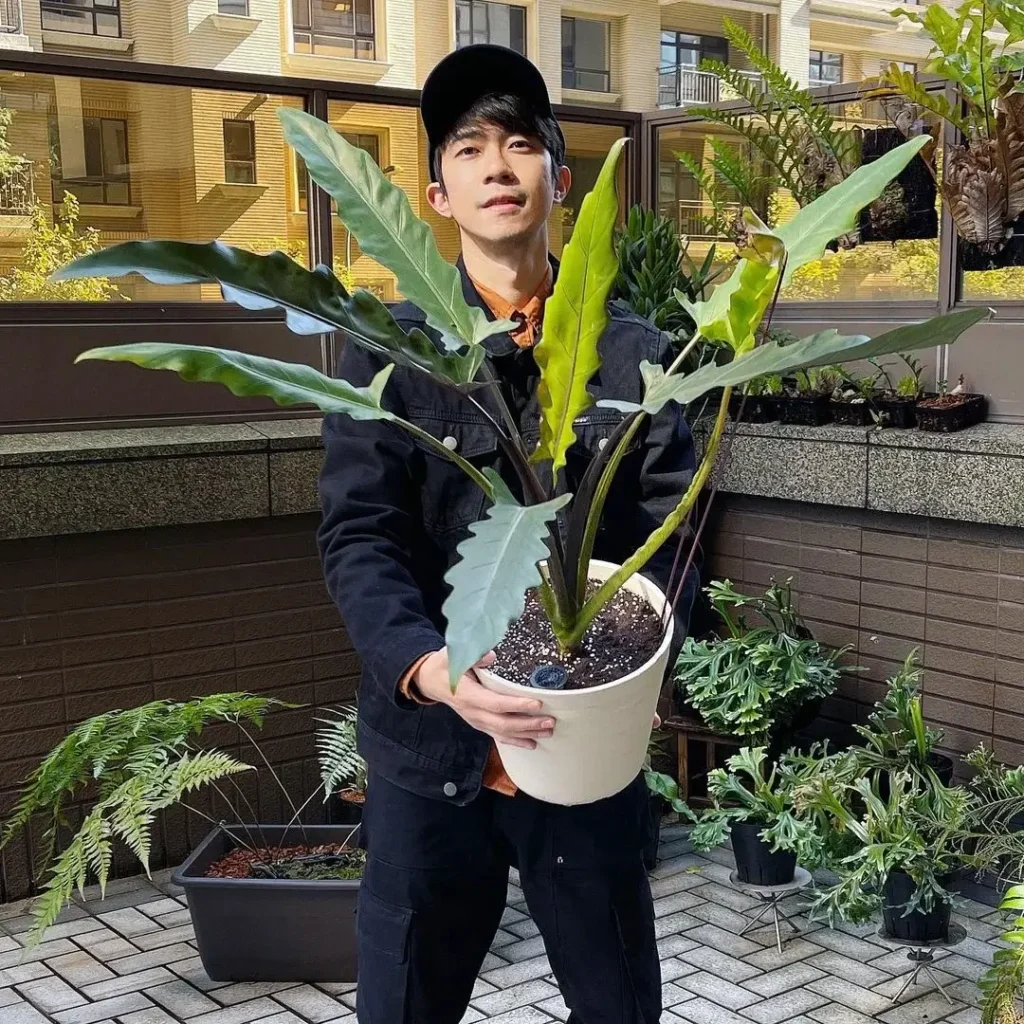
By staying vigilant and taking proactive measures, you can protect your plant from harm and ensure its continued vitality.
Pests to Watch Out For
Alocasia Lauterbachiana is susceptible to attacks from common houseplant pests, including mealybugs, spider mites, and aphids. These pests can wreak havoc on your plant by sucking sap from its leaves, causing wilting, yellowing, and stunted growth. Keep a close eye on your plant for any signs of pest infestation, such as tiny webs, sticky residue, or visible insects.
Care Tip: To combat pests, regularly inspect your Alocasia Lauterbachiana and gently wipe down its leaves with a damp cloth to remove any pests or debris. For more severe infestations, consider using natural insecticidal soaps or neem oil to deter pests without harming the plant.
Common Diseases
While Alocasia Lauterbachiana is generally resilient, it can still fall victim to certain diseases if not properly cared for. Root rot is a common issue caused by overwatering or poorly-draining soil, leading to the decay of the plant’s roots and subsequent wilting and yellowing of the leaves. Additionally, leaf spot diseases, such as bacterial leaf spot and fungal leaf spot, can occur if the plant’s foliage remains wet for extended periods, resulting in dark, water-soaked lesions on the leaves.
Care Tip: To prevent root rot, ensure that your Alocasia Lauterbachiana is potted in well-draining soil and allow the top inch of soil to dry out between waterings. Avoid splashing water on the leaves when watering, as this can create a moist environment conducive to leaf spot diseases. If you notice any signs of disease, promptly remove affected leaves and adjust your watering practices to prevent further spread.
Environmental Stressors
In addition to pests and diseases, Alocasia Lauterbachiana can also be susceptible to environmental stressors such as temperature fluctuations and drafts. Sudden changes in temperature or exposure to cold drafts can cause the plant’s leaves to become droopy or curl, indicating distress. It’s essential to keep your plant in a stable environment with consistent temperature and humidity levels to minimize stress and promote healthy growth.
Alocasia Lauterbachiana Repotting Guide
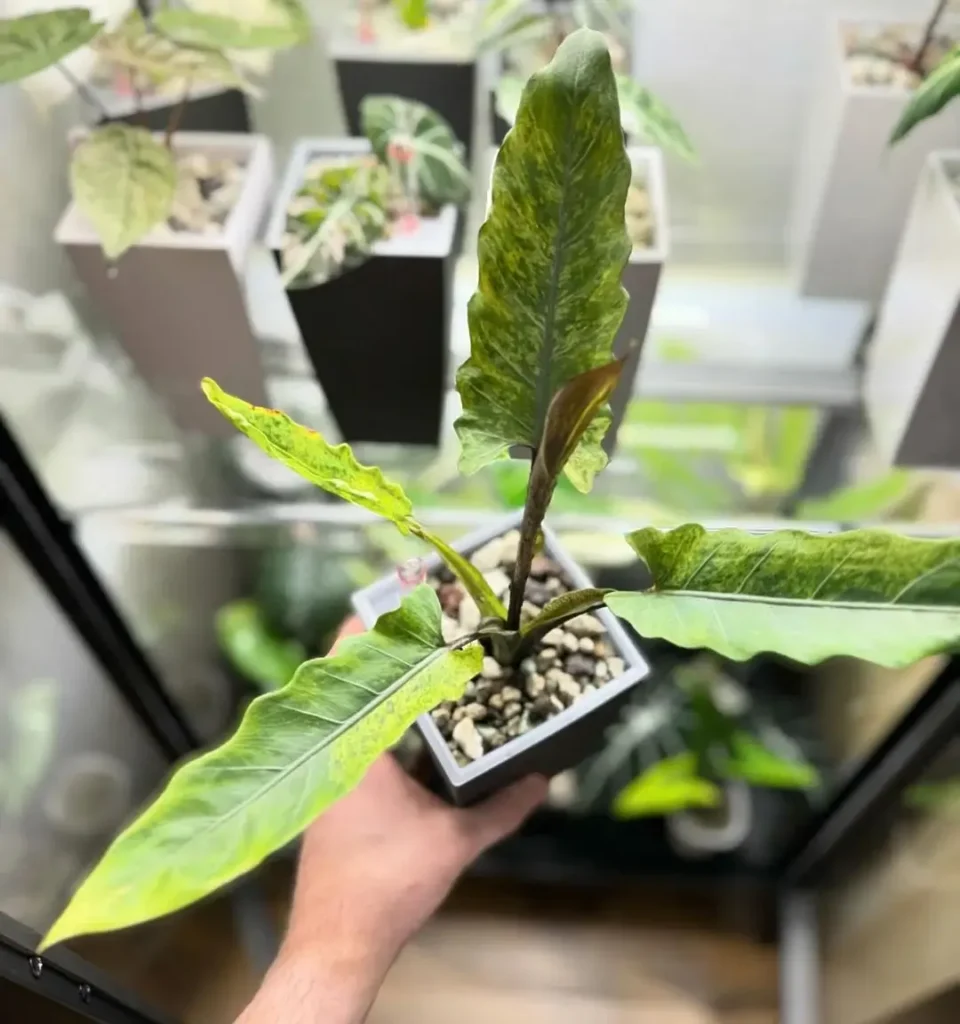
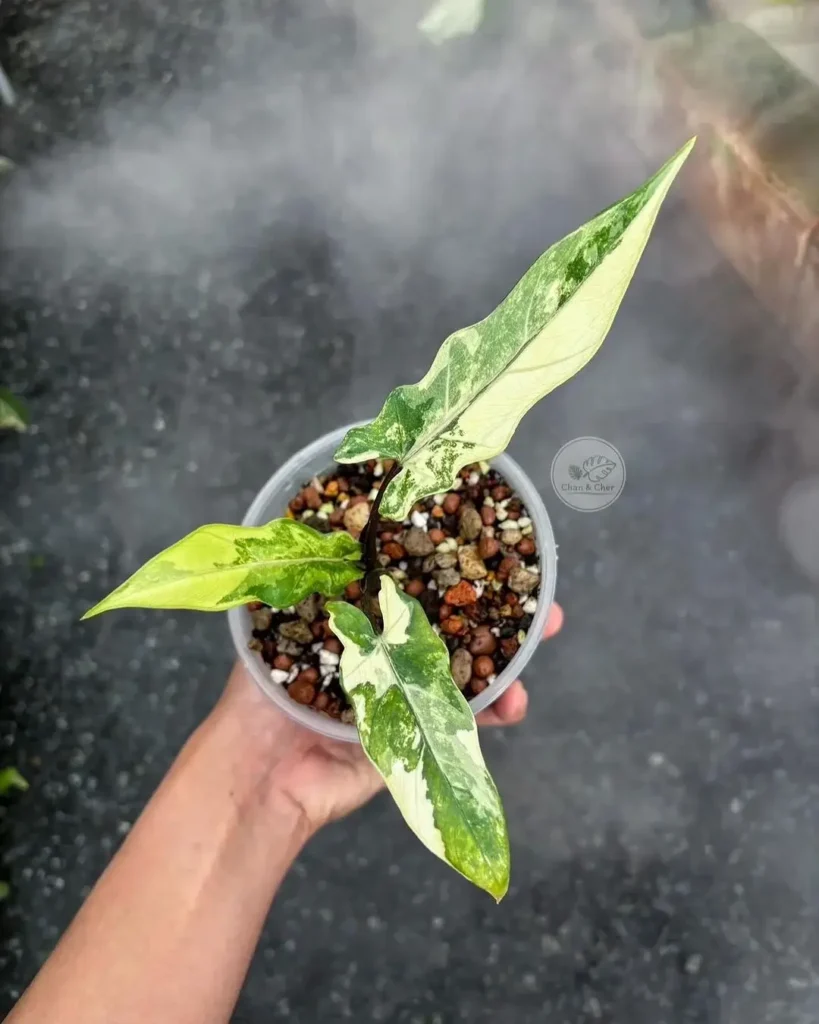
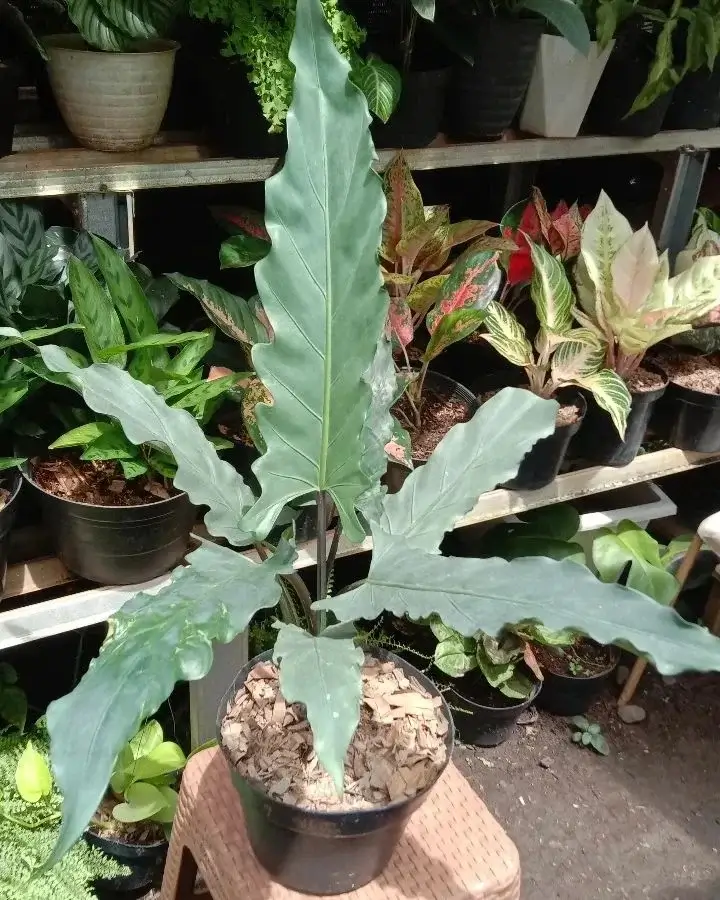
Repotting your Alocasia Lauterbachiana is an essential aspect of its care to ensure continued growth and health. Here, we’ll delve into the process of repotting this magnificent plant and provide tips for a successful transition.
When to Repot
Alocasia Lauterbachiana typically requires repotting every 1 to 2 years, or when it outgrows its current container. Signs that your plant may need repotting include roots emerging from the drainage holes, overcrowded root systems, or declining growth despite adequate care. Spring is generally the best time to repot, as the plant is entering its active growing phase.
Repotting Process
- Choose the Right Pot: Select a pot that is one size larger than the current container, with drainage holes to prevent waterlogging. Ensure that the new pot has sufficient room for the plant’s roots to spread and grow.
- Prepare the Plant: Carefully remove the Alocasia Lauterbachiana from its current pot, gently loosening the roots if necessary. Shake off excess soil and inspect the roots for any signs of damage or rot, trimming away any unhealthy roots with sterile scissors or pruning shears.
- Add Fresh Soil: Fill the new pot with a well-draining potting mix, such as a combination of peat moss, perlite, and potting soil. Create a small mound of soil in the center of the pot to support the plant’s root ball.
- Plant the Alocasia: Place the Alocasia Lauterbachiana in the center of the pot, ensuring that the top of the root ball sits slightly below the rim of the pot. Fill in the gaps around the root ball with fresh soil, gently pressing down to secure the plant in place.
- Water Thoroughly: After repotting, thoroughly water the Alocasia Lauterbachiana to help settle the soil and hydrate the roots. Allow any excess water to drain away, and place the plant in a location with bright, indirect light.
Aftercare Tips
- Monitor Moisture Levels: Keep an eye on soil moisture levels in the days following repotting, ensuring that the soil remains evenly moist but not waterlogged. Avoid overwatering during this period to prevent root rot.
- Provide Gentle Care: After repotting, avoid disturbing the plant unnecessarily and minimize handling to allow it to adjust to its new environment. Maintain consistent care practices, including watering, lighting, and humidity levels, to promote healthy growth.
Alocasia Lauterbachiana Toxicity: Keeping Pets Safe
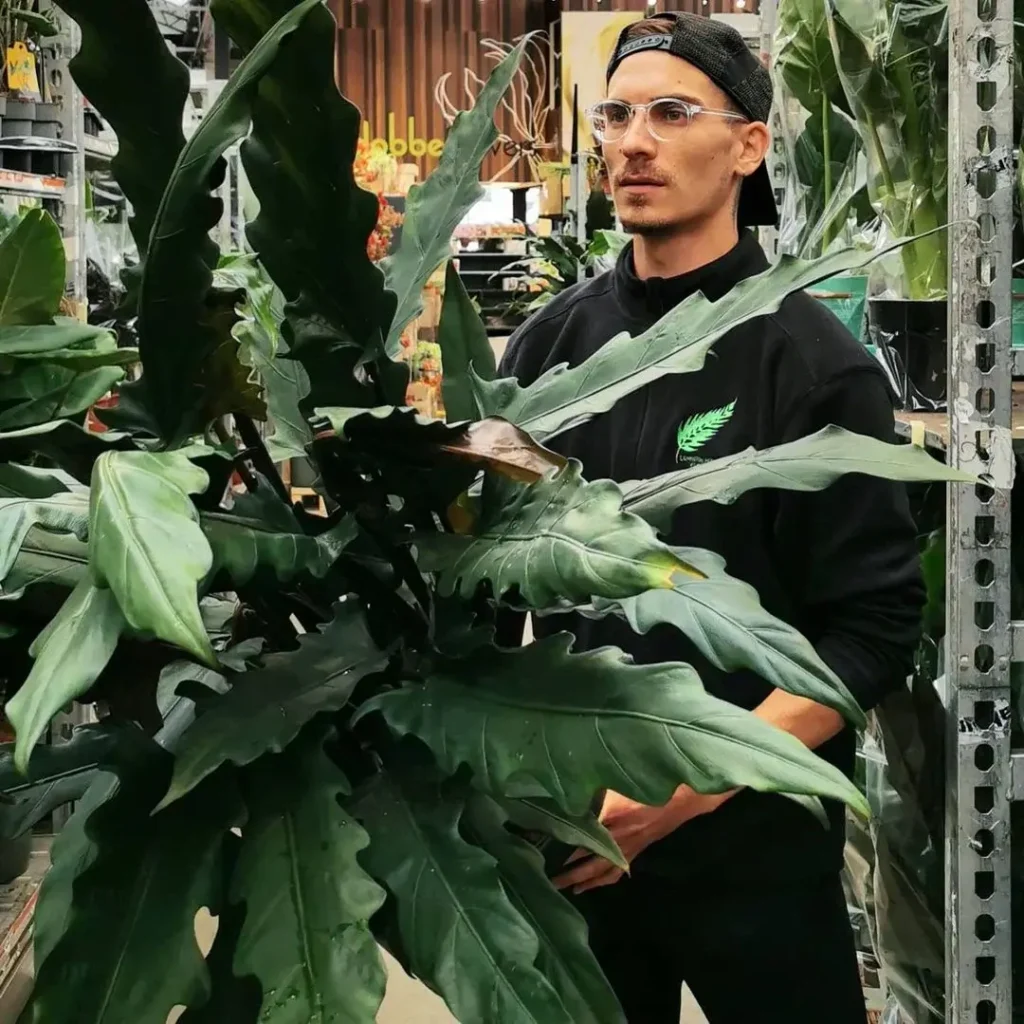
While Alocasia Lauterbachiana adds beauty to your home, it’s important to be aware of its potential toxicity to pets. Here, we’ll discuss the risks associated with this plant and how to keep your furry companions safe.
Toxic Components
Alocasia Lauterbachiana contains oxalate crystals in its leaves, stems, and roots. When ingested, these crystals can cause irritation and swelling in the mouth, throat, and digestive tract of pets. Symptoms of toxicity may include drooling, vomiting, difficulty swallowing, and abdominal pain.
Preventive Measures
To protect your pets from the dangers of Alocasia Lauterbachiana toxicity, consider the following preventive measures:
- Placement: Display your Alocasia Lauterbachiana in an area that is inaccessible to pets, such as a high shelf or hanging planter. Keep the plant out of reach of curious pets to prevent accidental ingestion.
- Supervision: Supervise your pets when they are near houseplants, especially if they have a tendency to chew on or investigate foliage. Redirect their attention to pet-safe toys and activities to minimize the risk of exposure to toxic plants.
- Education: Familiarize yourself with the symptoms of plant toxicity in pets and seek veterinary care immediately if you suspect ingestion of Alocasia Lauterbachiana or any other toxic plant. Prompt treatment can help mitigate the effects of poisoning and prevent complications.
Pet-Safe Alternatives
If you have pets and are concerned about the risks associated with Alocasia Lauterbachiana, consider incorporating pet-safe houseplants into your home decor. Some non-toxic options include spider plants, Boston ferns, and air plants, which add greenery to your space without posing a threat to your furry friends.
Alocasia Lauterbachiana in Interior Design
Transform your living space into a lush oasis with the addition of Alocasia Lauterbachiana. This stunning plant not only adds a touch of natural beauty to your home but also serves as a versatile design element that can elevate any interior setting.
Enhancing Aesthetic Appeal
With its striking foliage and bold presence, Alocasia Lauterbachiana makes a statement in any room. Whether placed as a focal point in a living room or used to add greenery to a home office, this plant adds a touch of elegance and sophistication to your interior decor. Its vibrant foliage complements a wide range of design styles, from modern and minimalist to bohemian and eclectic.
Creating Visual Interest
The unique shape and texture of Alocasia Lauterbachiana’s leaves create visual interest and texture within your space. Use this plant to add depth and dimension to your interior design by placing it in areas where it can be admired from different angles. Whether displayed on a plant stand, nestled among other houseplants, or showcased in a decorative pot, Alocasia Lauterbachiana adds a dynamic element to your decor scheme.
Incorporating Natural Elements
Bringing nature indoors has numerous benefits, from improving air quality to reducing stress and promoting well-being. Alocasia Lauterbachiana allows you to incorporate natural elements into your home decor, fostering a sense of connection to the outdoors and creating a tranquil atmosphere. Use this plant to infuse your living space with a sense of serenity and harmony, enhancing your overall quality of life.
Care Tip: When incorporating Alocasia Lauterbachiana into your interior design, consider the plant’s lighting and humidity requirements. Place it near a window where it can receive bright, indirect light, and ensure that the room maintains adequate humidity levels to keep the plant healthy and thriving. Additionally, choose decorative pots or planters that complement your existing decor style and provide proper drainage for the plant’s roots.
Adding Personal Touches
In addition to its aesthetic appeal, Alocasia Lauterbachiana allows you to express your personality and style through creative styling and presentation. Experiment with different containers, plant stands, and arrangements to create a look that reflects your unique taste and preferences. Whether you prefer a minimalist display or a more eclectic arrangement, Alocasia Lauterbachiana serves as a versatile canvas for your creative vision.
Conclusion
Caring for Alocasia Lauterbachiana involves providing optimal lighting, watering, and maintenance to ensure its health and vitality. Incorporating this stunning plant into your interior design adds a touch of elegance and tranquility to any space, promoting a sense of well-being and connection to nature. With proper care and attention, Alocasia Lauterbachiana will thrive, bringing joy and beauty into your everyday life for years to come.
FAQ
How often should I fertilize my Alocasia Lauterbachiana?
During the growing season, fertilize your Alocasia Lauterbachiana every 4 to 6 weeks with a balanced liquid fertilizer diluted to half strength. Avoid fertilizing during the winter months when the plant is dormant to prevent overfeeding.
What should I do if my Alocasia Lauterbachiana’s leaves turn yellow?
Yellowing leaves on Alocasia Lauterbachiana can indicate overwatering, underwatering, or nutrient deficiencies. Check the soil moisture levels and adjust your watering accordingly. Ensure proper drainage and consider fertilizing if nutrient deficiencies are suspected.
How can I increase humidity for my Alocasia Lauterbachiana?
To increase humidity for your Alocasia Lauterbachiana, place a humidifier near the plant or set it on a tray filled with pebbles and water. Misting the leaves occasionally can also provide additional moisture. Avoid placing the plant near drafts or heating vents, as these can decrease humidity levels.
Is Alocasia Lauterbachiana toxic to pets?
Yes, Alocasia Lauterbachiana is toxic to pets if ingested. Keep this plant out of reach of cats, dogs, and other pets to prevent accidental ingestion, which can cause gastrointestinal upset and other adverse effects. Consider displaying the plant in a location where pets cannot access it.

Writer/Green Thumb/Explorer – Rooted deep in the rich soils of Devon, I’ve cultivated a vast expertise in plant care, helping greenery thrive in homes across the UK. When I’m not crafting detailed plant care guides, I’m journeying through the lush landscapes of the West Country, unearthing nature’s secrets and sharing them with fellow plant enthusiasts. Every leaf has a story, and I’m here to tell it.


